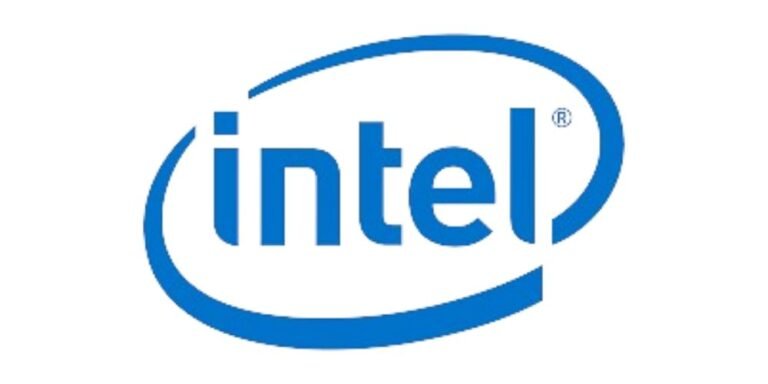Intel Corporation, founded in 1968 by Robert Noyce and Gordon Moore, is one of the most influential and innovative technology companies globally. Headquartered in Santa Clara, California, Intel has played a pivotal role in shaping the semiconductor industry landscape, contributing significantly to the evolution of computing technology.
Intel’s primary focus revolves around designing and manufacturing microprocessors, the central processing units (CPUs) that power a vast array of computing devices, from personal computers to servers and embedded systems. The company’s iconic “Intel Inside” branding has become synonymous with high-performance computing.
Throughout its history, Intel has been at the forefront of innovation, consistently pushing the boundaries of semiconductor technology. The company is renowned for introducing the first microprocessor, the Intel 4004, in 1971, marking a revolutionary moment in computing history. Since then, Intel has continued to lead the industry with groundbreaking advancements, including the development of x86 architecture, which has become the standard for many desktop and server processors.
Intel’s commitment to research and development has enabled it to maintain a competitive edge in an ever-evolving technological landscape. The company invests heavily in cutting-edge technologies such as artificial intelligence, machine learning, and 5G connectivity, ensuring it remains at the forefront of technological innovation.
Beyond microprocessors, Intel has diversified its product portfolio to include memory solutions, programmable semiconductors, and networking products. The acquisition of companies like Altera and Mobileye has further strengthened Intel’s position in the market, allowing it to offer a comprehensive range of products and solutions.
While Intel has faced challenges, particularly in the face of increased competition and shifts in the industry landscape, the company continues to adapt and evolve. As the demand for computing power and emerging technologies continues to grow, Intel remains a central figure in shaping the future of the digital world. Intel Corporation remains a cornerstone of the global technology industry, with a rich history of innovation and a commitment to pushing the boundaries of what is possible.
| Founded | July 18, 1968 |
| Founders | Gordon Moore Robert Noyce Arthur Rock |
| Headquarters | Santa Clara, California, Untied states |
| Type | Public [Traded as-Nasdaq: INTC] |
| Industry | Semiconductors, Computer hardware, Autonomous cars, Automation, Artificial intelligence |
| Products | Central processing units, Microprocessors, Integrated graphics processing units (iGPU), Graphics processing units, Systems-on-chip (SoCs), Motherboard chipsets, Network interface controllers, Modems, Solid-state drives, Wi-Fi and Bluetooth chipsets, Flash memory, Vehicle automation sensors |
| Subsidiaries | Mobileye (94.2%), Intel Ireland |
| Website | www.intel.com |
Inception and the Microprocessor Revolution
Intel Corporation, founded in 1968 by Robert Noyce and Gordon Moore, emerged as a pioneer in the semiconductor industry. The company’s journey began with the introducing of the Intel 4004 microprocessor in 1971, heralding a new era in computing. This compact chip marked the birth of the microprocessor revolution, laying the foundation for Intel’s future dominance in technology.
The x86 Architecture and Industry Standards
Intel’s visionary move towards the x86 architecture proved to be a strategic masterstroke. This architecture, introduced with the 8086 processor in 1978, became the industry standard for personal computers and servers. The widespread adoption of x86 architecture solidified Intel’s position as a leader, and the iconic “Intel Inside” logo became synonymous with computing power. The company’s commitment to setting industry standards fostered compatibility and innovation across various devices.
Diversification and Technological Advancements
As technology advanced, so did Intel. The company consistently invested in research and development, enabling it to stay at the forefront of innovation. Intel’s foray into memory solutions, programmable semiconductors, and networking products showcased its commitment to diversification. The acquisitions of companies like Altera and Mobileye further expanded Intel’s capabilities, positioning it as a comprehensive provider of technological solutions.
Collaboration and Ecosystem Development
Intel recognized the importance of collaboration in driving technological progress. The company forged partnerships with various tech entities, contributing to developing a robust ecosystem. This collaborative spirit facilitated compatibility and interoperability across devices, shaping the industry’s trajectory.
Challenges and Adaptations
Throughout its history, Intel has faced challenges, including increased competition and shifts in the technological landscape. However, the company’s resilience and adaptability allowed it to navigate these challenges successfully. Intel’s ability to evolve with the changing market demands has been crucial in maintaining its prominent role in the global technology landscape.
In conclusion, Intel Corporation’s history is a tale of innovation, resilience, and industry leadership. From the inception of the microprocessor to setting industry standards and embracing diversification, Intel’s journey reflects its commitment to shaping the future of technology. As we look ahead, Intel continues to stand as a pioneer, influencing the digital world with its rich legacy and ongoing dedication to pushing technological boundaries.







